Superstars of STEM: 18 South Australian women share how they plan to change the world
Their brilliant research and innovative projects could stop dementia in its tracks or turn failed drugs into an everyday product. Meet 18 game changers.

SA News
Don't miss out on the headlines from SA News. Followed categories will be added to My News.
Meet South Australia’s Superstars of STEM – women changing the world with brilliant research and innovative projects.
From rehabilitating Adelaide’s seagrass meadows and being on the alert for sun superstorms to investigating elegant spirals in heart problems and checking the effects of hearing aids on dementia, plus so much more, they are game changers.
Many are quiet achievers — but a program to help them share their work with the wider community is giving them skills to spread the word.
Superstars of STEM is an Australian initiative to smash gender assumptions about who can work in science, technology, engineering and maths (STEM).
Since it was created by Science Technology Australia in 2017, it has made a powerful contribution to tackle the gender inequity of role models featured in the media as STEM experts.
Open to women and non-binary people, the program equips STEM experts with advanced communication skills and opportunities – in the media, on stage and in schools.
The result: growing a critical mass of more diverse scientists appearing regularly in the media to inspire the next generations of young Australians into STEM study and careers.
When the 2023 cohort attended training to hone their media skills at Adelaide’s Australian Science Media Centre they were grilled by journalists as they outlined their work and showcased projects from ultra-precise atomic clocks to storing hydrogen.
Here’s what 18 Superstars of STEM had to say.
Tiahni Adamson
Organisation: CH4Global
Pitch: Looking to the ocean to reduce detrimental emissions and keep cow burps at bay
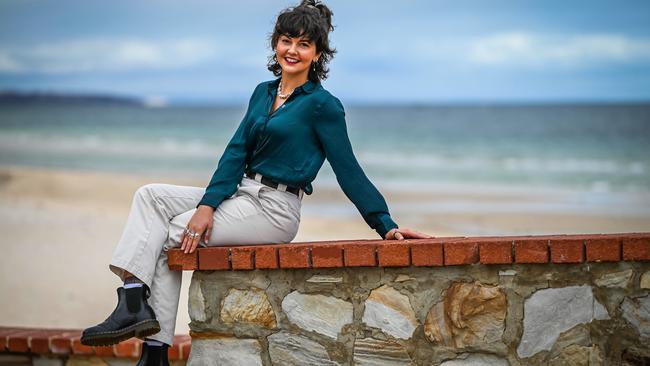
Wildlife conservation biologist Tiahni Adamson, 28, was crowned Young Australian of the Year for SA on Wednesday and she is also considered a superstar of STEM.
“I work at CH4 Global, a Climate Tech company that’s working urgently to overcome the biggest crisis humanity faces, climate change,” Ms Adamson said.
“Methane is a massive climate challenge — and an opportunity.
“A challenge, because it heats the climate 80 times more than CO2, and 1.5 billion world cattle emit more greenhouse gases than the whole of China.
“An opportunity because we have a scalable platform to reduce up to 90 per cent of enteric methane emissions from cattle utilising the power of a native seaweed. With our partners, our goal is to deliver Gigatonne-scale reductions by 2030.
“Feeding CH4 Global’s Methane Tamer to 150 million cattle would be like taking over 50 million combustion cars off the road.”
Dr Dhani Dharmaprani
University: Flinders University
Pitch: From the Milky Way to our beating hearts – spirals help tackle deadly heart conditions
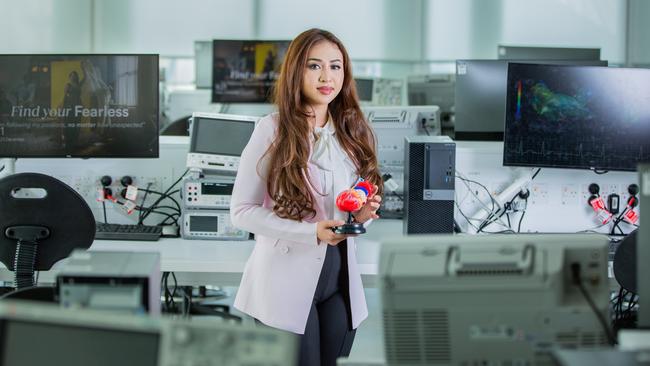
Dr Dhani Dharmaprani was named as one of the South Australians to watch in 2023.
“I’m harnessing the power of mathematics and physics to dive deep into mysterious spiral waves that occur in the heart,” Dr Dharmaprani said.
“The heart’s electrical spirals can trigger conditions such as atrial and ventricular
fibrillation, affecting one in four Australians and representing the leading cause of sudden death, so understanding them could save lives.
“You may not have known that our heart’s rhythm echoes the cosmic spiral patterns found in galaxies and whirlpools. But, while galaxies gracefully rotate and whirlpools form mesmerising patterns, the heart’s electrical spirals can kill.
“By understanding these common patterns in nature, I hope to reshape our understanding of and interventions for heart disorders.”
Dr Charlotte Birkmanis
University: University of WA
Pitch: Learning to love shark infested waters
“I’m working on shark behaviour, looking at how the animals move around, how they’re affected by us, and how changes in the marine environment, including the availability of prey, are affecting them,” Dr Charlotte Birkmanis said.
“We might imagine a world without sharks as a swimmer’s delight, but these much-maligned creatures play a vital role in maintaining healthy oceans.
“To help ensure the survival of sharks, I’m looking at where they are, why they’re there and how many are out there, and how all this is changing over time.”
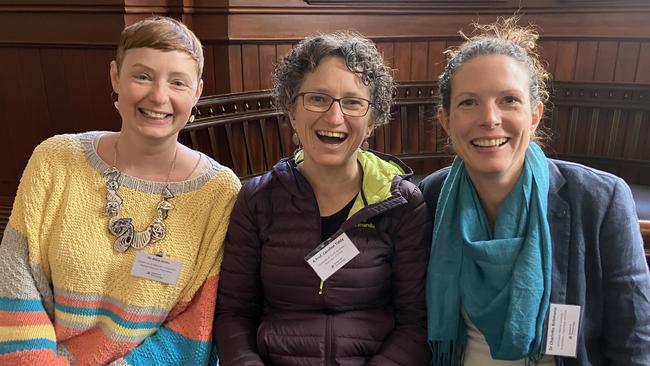
Dr Alice Jones
University: University of Adelaide
Pitch: Please keep off the (sea) grass
The Adelaide metropolitan areas has lost some 5000ha of seagrass since the 1970s and Dr Alice Jones is working to save it.
It’s largely lost to the quality of water run-off, but improved water quality and reseeding helped by sandbags aims to turn the tide.
“We’re working to restore SA’s underwater lawns after decades of seagrass loss along Adelaide’s coast,” Dr Jones said.
“These grasses are a vital home to many marine creatures, including many popular with fishers and diners, and they also protect our coastlines from sea level rise and storms.
“They also act as a water filtration system, keeping our waters clean for bathers.
“Our large-scale seagrass restoration project should allow the lush marine meadows that once existed to return to their former glory.”
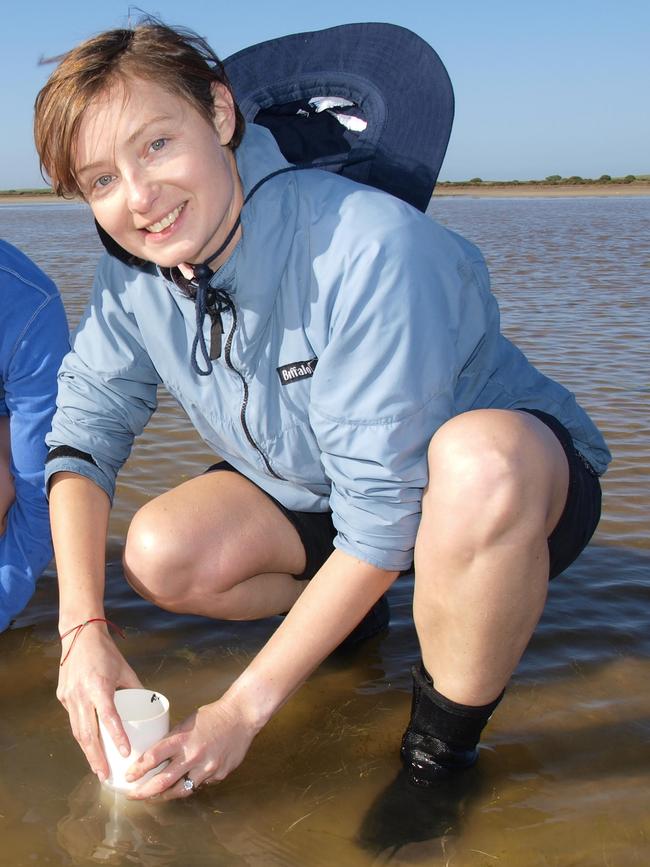
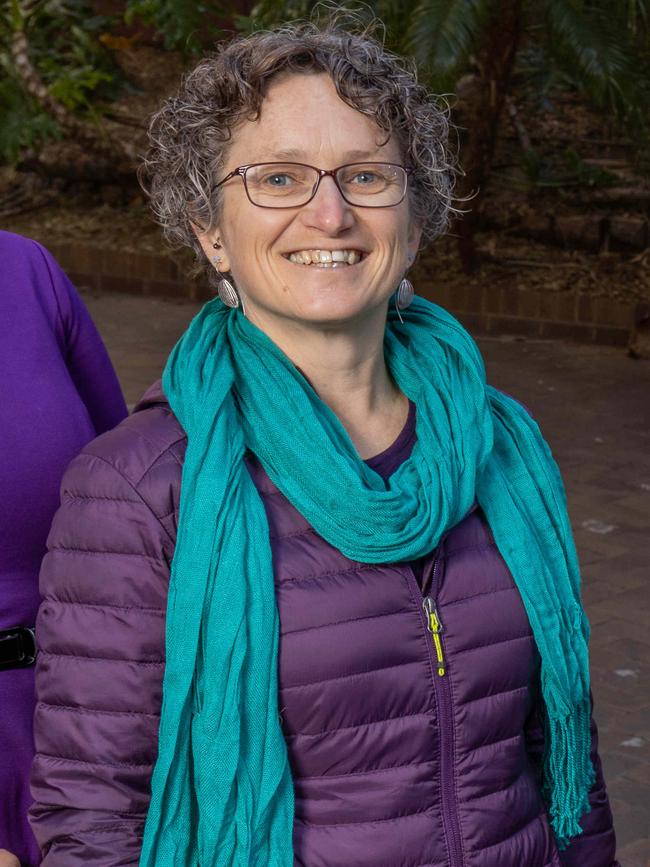
Associate Professor Caroline Tiddy
University: University of SA
Pitch: Seeing red – we need more copper to go green
“We’re trying to make copper mining more efficient and environmentally friendly, using the chemistry of rocks and minerals to find deposits located deep under the Earth’s surface,” Associate Professor Caroline Tiddy said.
“Copper, the red metal, is an important part of the global green energy transition because it’s a vital component of electric alternatives to fossil fuel technologies.
“However, current mining techniques can be environmentally damaging.
“Our new methods, developed at the University of South Australia, are ready for use by mineral explorers and will improve our chances of having enough copper to help the world go green.”
Dr Grace Vincent
University: CQUniversity
Pitch: Bedtime procrastination due to habit, not just laziness
“My work shows people who delay going to sleep mainly do so out of habit, not out of laziness, a lack of self control, or an inability to resist bingeing ‘just one more episode’,” Dr Grace Vincent said.
“We found people who stay up late are often acting on autopilot and lose track of just how late it is. So, helping people form new habits around sleep may be the answer.
“We all worry about getting enough shut-eye, and it’s estimated that around 4 in 10 Australian adults don’t get enough good-quality sleep, so understanding our sleep habits could benefit the health of the nation.”
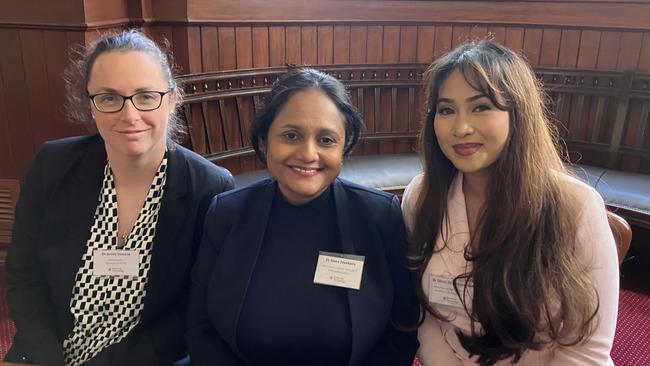
Dr Dona Jayakody
Organisation: Ear Science Institute Australia
Pitch: Can treating hearing loss delay or prevent dementia?
“I’m looking at whether we can prevent dementia or delay its onset by treating hearing loss using hearing aids,” Dr Dona Jayakody.
“I’m also investigating whether hearing aids can reduce the loss of brain volume and improve the brain’s energy balance among people with hearing loss. Without a cure, we are looking at ways to reduce the risk of dementia.
“Hearing loss is the most important contributor to dementia that we can take action to improve, so we hope that by treating hearing loss, we may be able to stave off dementia, and perhaps even prevent it entirely.
“Dementia is the leading cause of disability among Australians aged 65 years or older and the second leading cause of death. Projections suggest that the total number of people living with dementia in Australia could reach 1.1 million by 2050, but this could be reduced by 13 per cent (or about 143,000 people) if the onset of symptoms could be delayed by two years or more.”
Megan Born
University: Energetics
Pitch: It all comes out in the (green) wash
“I work with top ASX listed companies on responding to and adapting to climate change – and helping them understand what information to disclose to the public,” Megan Born said.
“Fires, floods, storms – there are new headlines every day about the impact of climate change.
“And at the same time, companies are coming under increasing scrutiny from governments, institutions and large shareholders to say what they are doing to play their part in avoiding or reducing its impacts.
“But how can an ‘everyday’ investor assess and compare the performance and claims of companies in this area?
“How do you separate fact from fiction and know who is doing the ‘right’ thing? (Or what the ‘right’ thing even is?)
“I hope to help everyday investors ensure their money is supporting companies that are taking meaningful action to curb their impact on the climate.”
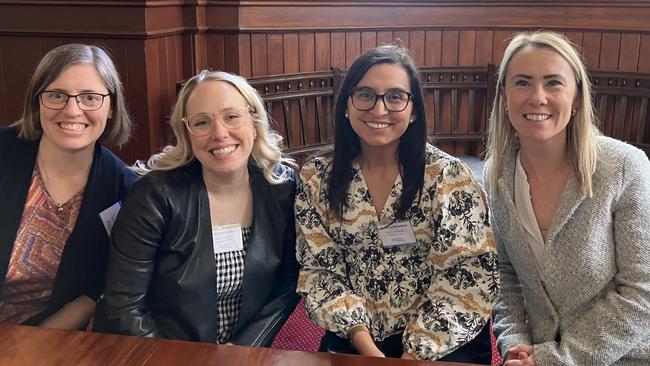
Dr Kelsi Dodds
University: Flinders University
Pitch: It’s all in their head: hyperactive brain cells worsen women’s pain
“We’ve discovered a promising new drug target to relieve pelvic pain in women,” Dr Kelsi Dodds
“This type of pain has been notoriously difficult to treat, and affects up to one in five women in Australia.
“Our work found that usually harmless immune cells in the brain can intensify incoming pain signals from pelvic organs.
“The immune cells become hyperactive, leading to abnormal brain activity, which can increase pain.
“We hope that drugs that calm down these immune cells will reduce women’s pelvic pain.”
Dr Jessica Bohorquez
University: Ricardo and University of Adelaide
Pitch: We’re all keen to save water, but can you live without it for a night?
“I’m encouraging Aussies to spend a single evening without water for ‘Water Night 2023’ by turning off the taps for five hours during a single night,” Dr Jessica Bohorquez said.
“While many of us know the world will face significant water challenges in the future, fewer than half of us take daily action to curb our water use.
“The Water Conservancy aims to change this. We hope ‘Water Night 2023’ will ripple through participants’ minds, making them think again about this precious resource that flows into our lives daily, yet exactly how it reaches us remains a mystery to many.
“The Water Conservancy is a not-for-profit committed to improving our relationship with water.”
Dr Kate Brand
Organisation: Bureau of Meteorology
Pitch: Sun storms are becoming more common, but what does it mean for us here on Earth?
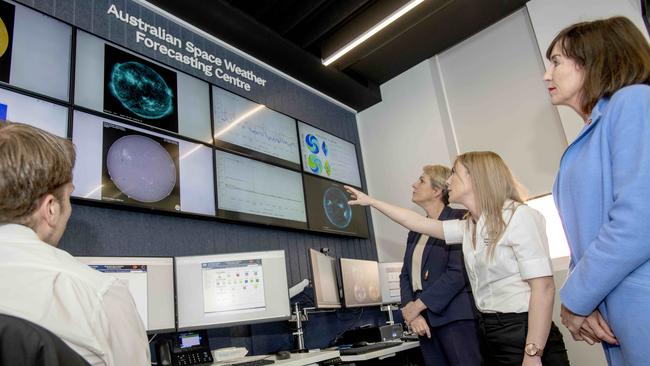
“At the Australian Space Weather Forecasting Centre, we’ve found that massive eruptions from the sun, known as space weather, are happening more often and becoming bigger,” Dr Kate Brand said.
“Space weather can damage or even destroy satellites, interrupt communications, cause power blackouts, and increase radiation exposure on some flights.
“But these storms are not unexpected – in the Sun’s 11-year solar cycle, we are currently approaching a peak of activity forecast for 2024, where space weather intensity and frequency is heightened. But the current cycle is expected to supersede the last peak, in 2013.
“In April this year we saw the largest geomagnetic storm in six years. As we become evermore reliant on space-based technology such as GPS, our vulnerability to impacts from these storms increases, so it’s vital we’re able to track and predict space weather.
“The Australian Space Weather Forecasting Centre is part of the Bureau of Meteorology (BOM).”
Sophie Gilbey
Organisation: CSIRO
Pitch: Walking the line – What the West can learn from Indigenous science
“I’m working on bringing together Indigenous and western science to show how they complement each other and how, taken together, they can expand our understanding of the world around us,” Sophie Gilbey said.
“It’s all about interconnectedness, how all parts make up the whole, nothing is separate, from the sky to rocks, to the birds to fish, they all have their place in the world and how we understand it.
“However, western science tends to remove this interconnectedness, pulling out components, analysing them, then putting them back.
“This approach teaches us about the individual component, but we can lose its place in the whole, forever changing the narrative.
“One approach is not more correct than the other, and I hope to show how combining these two different approaches could enrich science for everyone.”
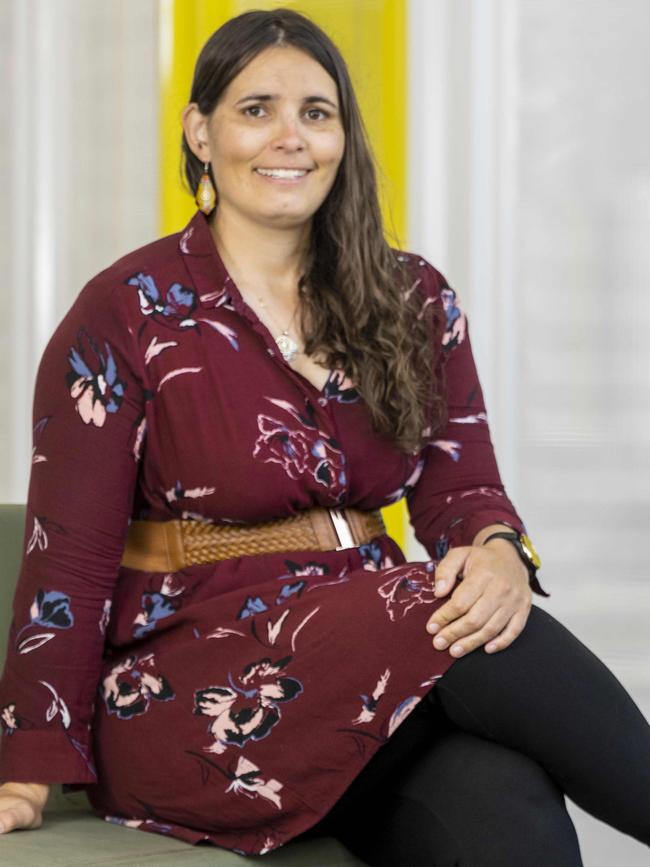
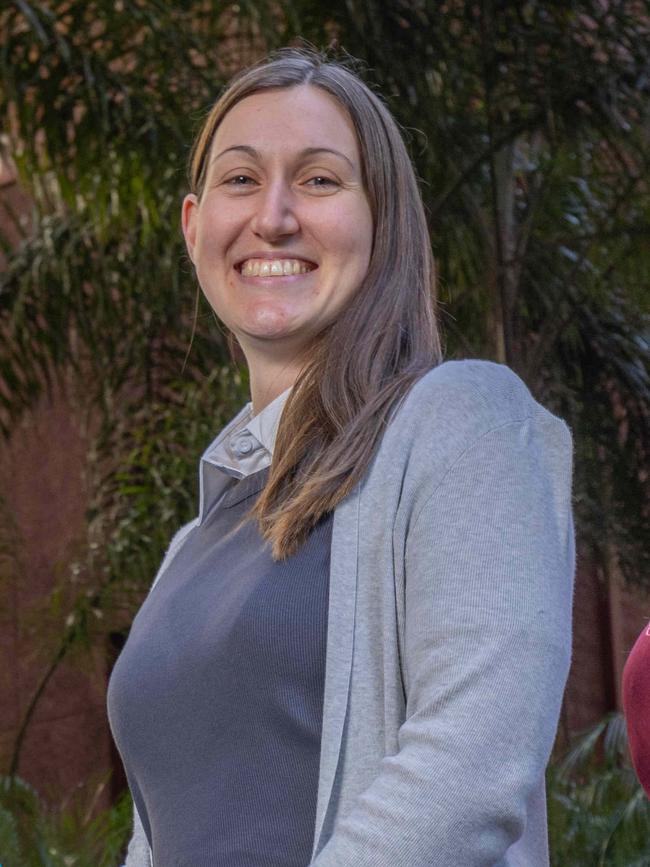
Dr Sarah Scholten
University: University of Adelaide
Pitch: A more precise atomic clock to improve GPS accuracy
“We are developing a portable rubidium clock, an ultra-precise atomic clock that uses the vibrations of rubidium atoms – a soft, silvery-white metallic element that is a vapour at room temperature – to measure time,” Dr Sarah Scholten said.
“Technologies including the GPS systems that lie behind the map apps on our phones require this level of precision to show us where we are to within a few metres, so they’re an essential tool for civilian, commercial, and defence uses.
“We tested the clock’s accuracy in Hawaii recently during an international naval exercise, confirming its usefulness in accurate timing and navigation and marking the first optical atomic clock demonstration at sea – a significant milestone for assured timing and navigation.
“For this achievement, my team was recently honoured with a Commendation from Australia’s Chief Defence Scientist, the prestigious Measurement Impact Award, and the People’s Choice Pitch Awards from the Australian National Measurement Institute.
“The clock has been developed at the Institute for Photonics and Advanced Sensing at the University of Adelaide.”
Dr Rachelle Kernen
University: University of Adelaide
Pitch: We need hydrogen for the green transition, but how can we make it affordable?
“I’m working on the use of salt caverns for hydrogen storage, an emerging technology, and found the suitability of salt caverns depends on the energy needs, infrastructure, and geological conditions of the region,” Dr Rachelle Kernen said.
“We’ve found salt caverns have the potential to play a big role in the large-scale and seasonal storage of hydrogen, but should be viewed as just one part of a wider strategy for hydrogen storage and distribution.
“Hydrogen is an important part of the low-cost green energy transition, particularly when it comes to integrating renewable energy into the existing power grid and balancing power supply.”
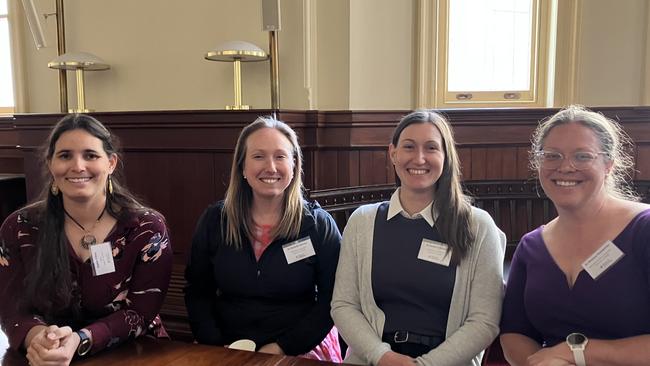
Dr Melissa Humphries
University: University of Adelaide
Pitch: You do the math – our planet depends on it
“Aussie kids aren’t studying maths, so it’s my mission to change our minds about its importance in all aspects of our lives, and encourage kids to study it,” Dr Melissa Humphries said.
“In 2020 only one in 10 Aussie students participated in higher mathematics and fewer than two in 10 enrolled in intermediate, but climate change, health, finance, food security, energy, are all underpinned by mathematics – and not the sort that a calculator or an AI bot can do for you.
“I’m a statistician who works with Forensic Science and Defence. My projects focus on everything from improving human health through to getting accurate forensic results from evidence.
“Let me take you on a journey of how maths is keeping us safe every day and try and change your mind about the importance of mathematics. And maybe I can convince you we need to get our kids back doing maths.”
Dr Tatiana Soares da Costa
University: University of Adelaide
Pitch: Turning failed antibiotics into game changing weed killers
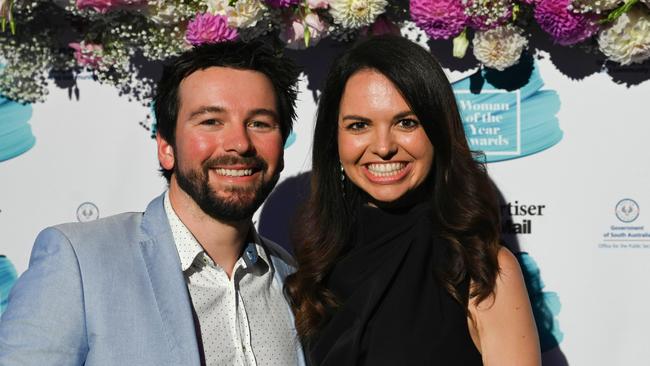
“I’m turning failed antibiotics into effective, environmentally friendly weed killers,” Dr Tatiana Soares da Costa said.
“We’re using antibiotic drugs that were originally developed to treat superbugs but failed to make it out of the lab, turning them into powerful foes for weeds that invade our gardens and cost farmers billions of dollars each year.
“By tweaking their molecular structure, we’ve found these drugs can kill the most problematic weeds in Australia without harming animals and the environment.”
Dr Tara Pukala
University: University of Adelaide
Biological chemist Dr Tara Pukala is interested in developing methods that allow us to “see” large biomolecules like proteins and DNA.
“I have developed new analytical approaches that visualise the size, shapes, structures and interactions of these biomolecules,” Dr Pakala said.
Her current project is commercially sensitive so not yet ready for public release.
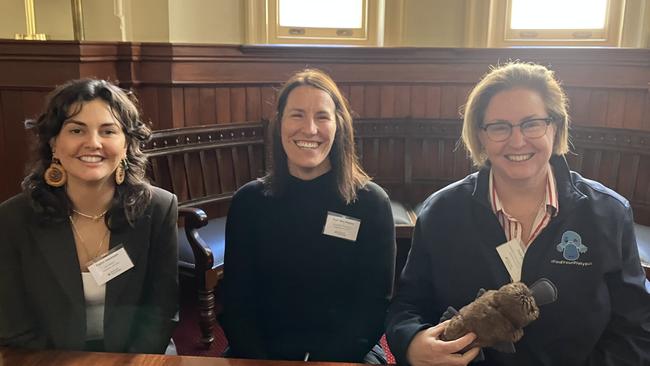
Patricia Kerin
Organisation: Institution of Chemical Engineers
Pitch: Is it a duck, is it a beaver … no, it’s a platypus! Why weak signals matter
“Weak signals matter, and my work is all about getting better at spotting them,” Patricia Kerin said.
“Weak signals are the little signs that something might be about to go wrong, for example the car engine temperature alarm comes on or the battery beep of a smoke detector.
“To understand the importance of weak signals, consider the platypus – an amazing and unlikely Australian creature with the bill of a duck and the tail of a beaver.
“If we just see the animal’s bill we might think we have a duck, and if we just see the animal’s tail we might think we have a beaver – but is it actually a platypus?
“My work is all about getting better at spotting the metaphorical platypuses.
“In the real world, if we ignore the weak signals, something might go wrong, like the smoke detector not working when we need it.”





